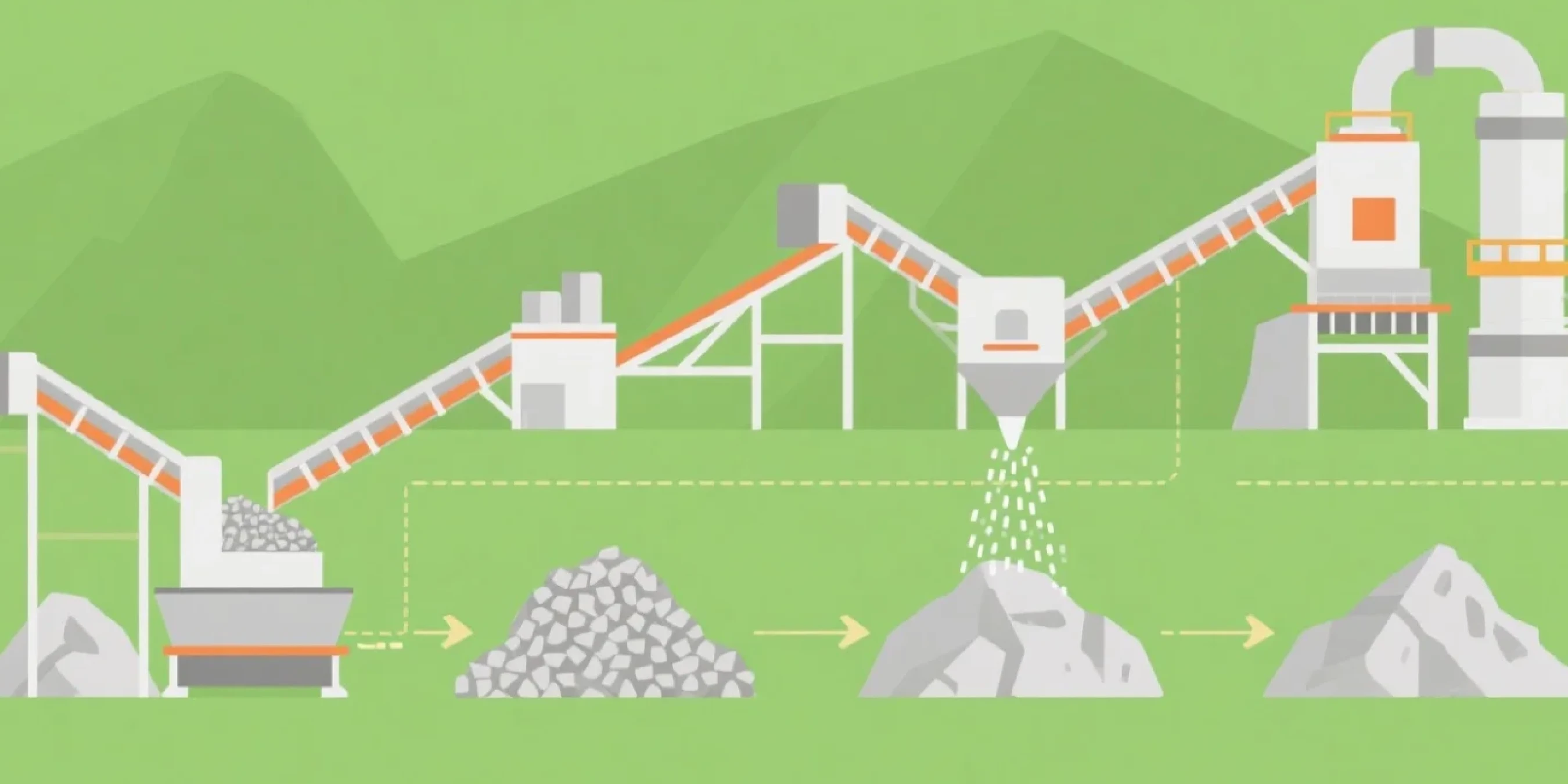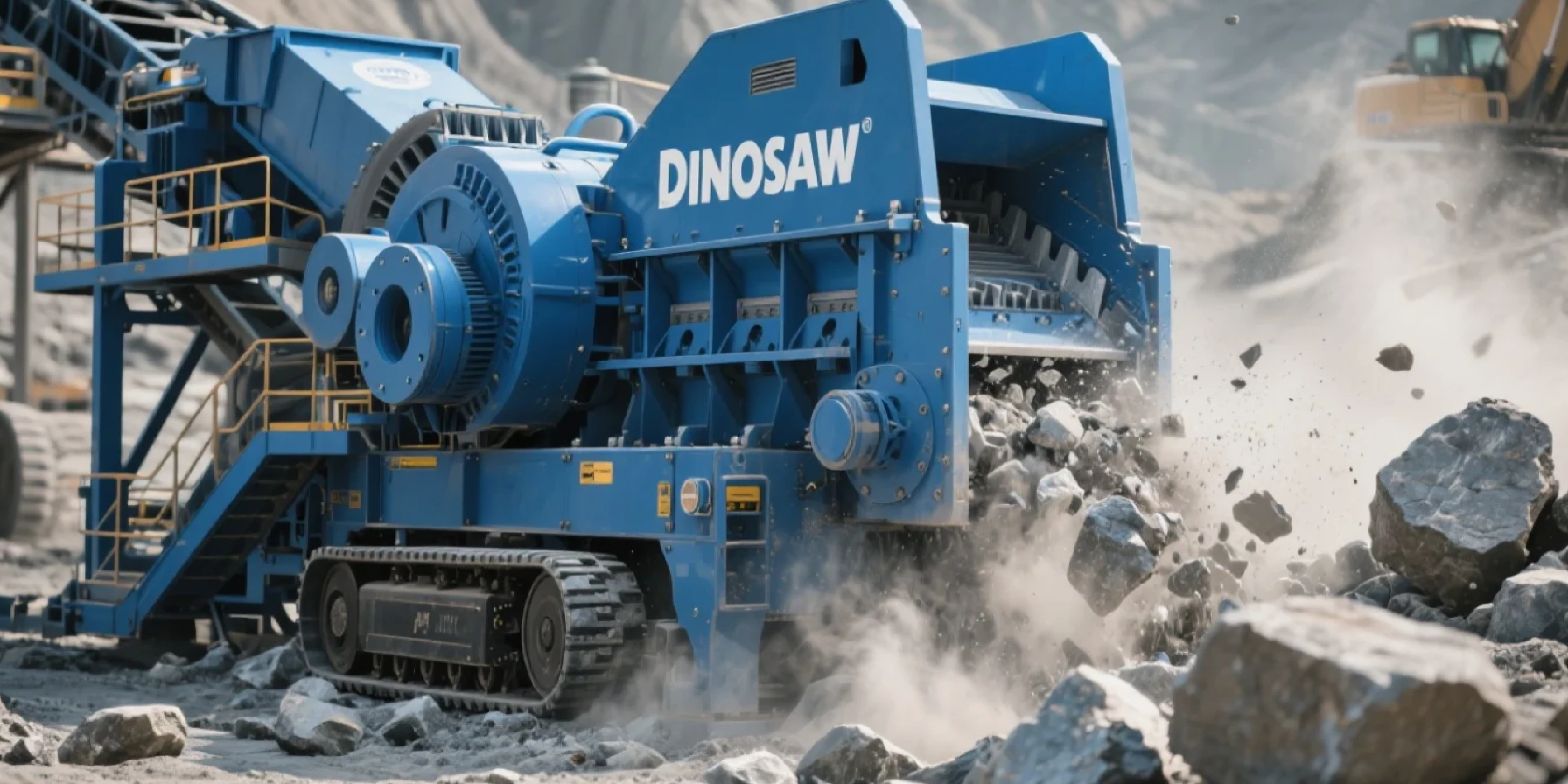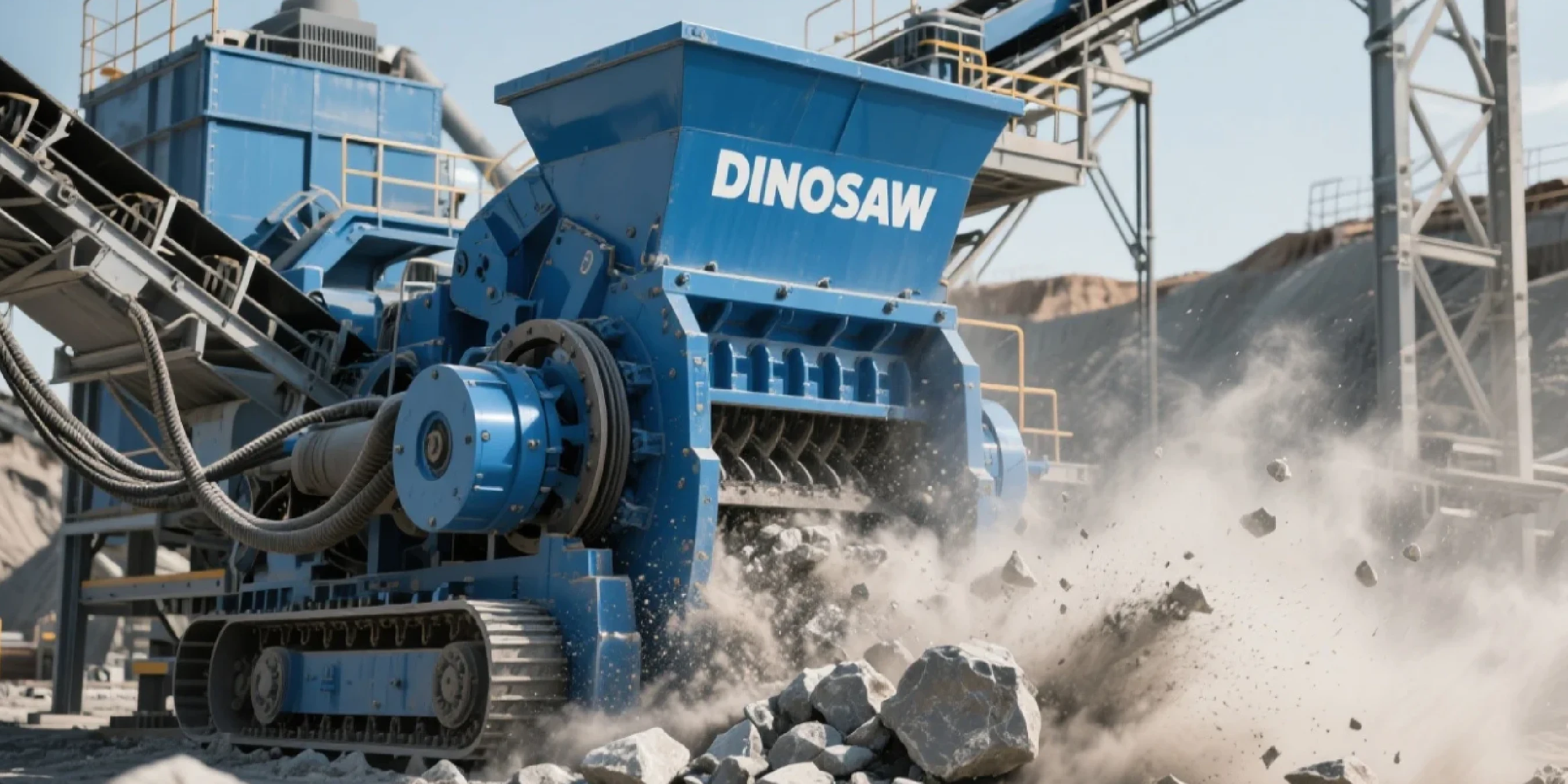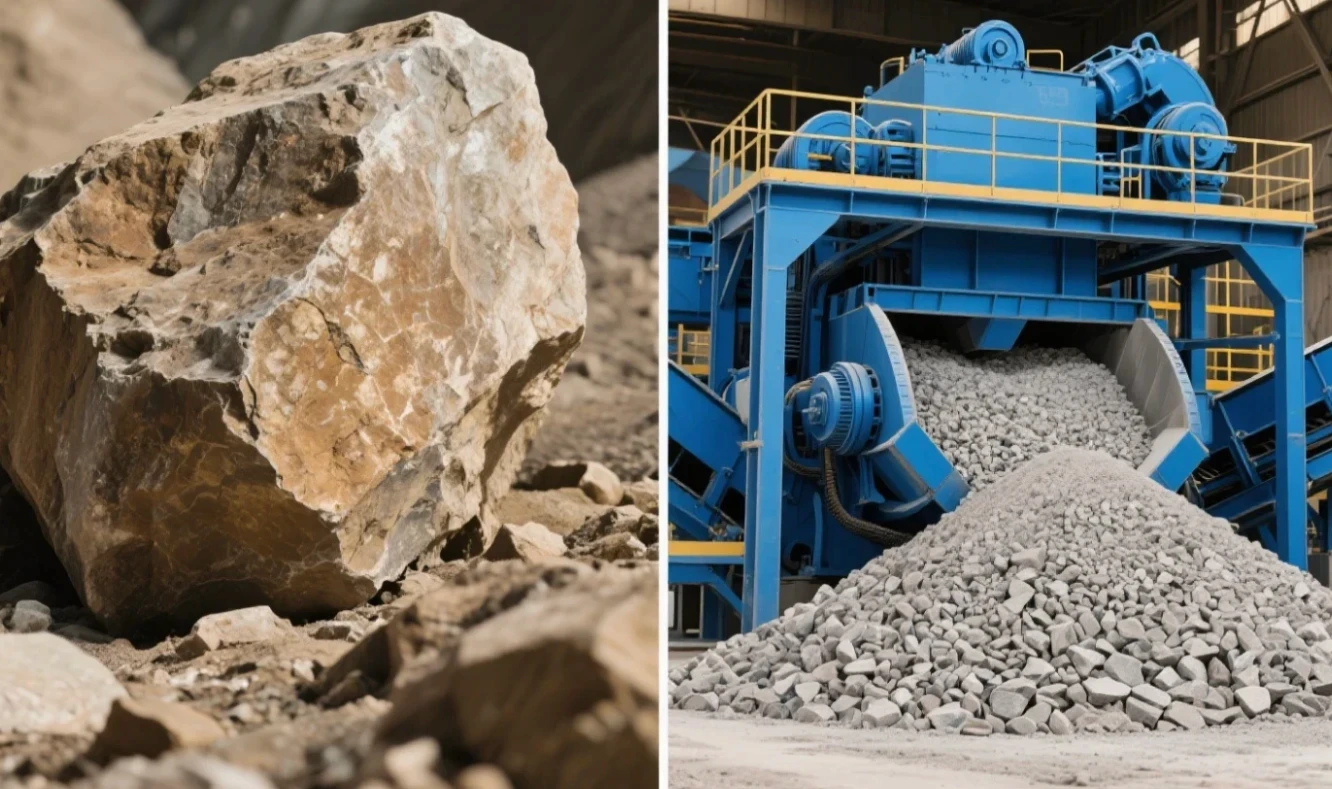Hi, this is Lizzy from Dinosaw ( Not a Robot ). Which Machine ( model ) do you want? Please WhatsApp us now
Everything you need to know about crusher plants in 2025. From mobile vs stationary setups to choosing the right system for your project - we break it down in plain English.
Ever wondered how massive boulders become the gravel under your feet? That's where crushing plants come in. These aren't just big machines that smash rocks (though they do that pretty well). They're actually sophisticated systems that turn everything from granite chunks to old concrete into perfectly sized materials for whatever you're building.
If you're in the aggregate business, you know these crushing setups inside and out. But here's the thing - they're doing way more than most people realize. Road gravel? Check. Concrete aggregate? Absolutely. Those super-fine materials for specialized industrial work? They've got that covered too.
Look, I've been around these operations long enough to see what works and what doesn't. The best crushing plants aren't just about raw power - they're about smart engineering that keeps your material flowing and your costs down. We'll walk through everything you need to know, from the basic setup to the nitty-gritty details that actually matter when you're choosing equipment.

How Do Crusher Plants Actually Work?
The Basic Setup and What It's Really Doing
A crusher plant - sometimes called a crushing and screening plant - is basically an industrial-scale rock processor. Picture this: you've got truck-sized boulders coming in one end, and perfectly sized gravel coming out the other. The whole point is taking those massive rocks from quarries or mines and breaking them down into whatever size you need.
What makes these systems impressive isn't just the crushing power. It's how they handle hundreds (sometimes thousands) of tons per hour while sorting everything into precise size categories. That's not happening by accident - there's some serious engineering behind making sure every piece of crushed rock ends up exactly where it should.
The Three-Stage Process That Makes It All Work
Most crushing operations follow a three-stage process. Each stage has its job, and skipping steps usually means problems down the line.
- Primary crushing: This is where the magic starts. Picture dump truck-sized boulders going into a mechanical monster. Jaw crushers clamp down like giant metal teeth, while gyratory crushers work more like a massive mortar and pestle. Either way, those house-sized rocks come out as manageable chunks - usually around 6-8 inches.
- Secondary crushing: Takes over from primary crushing. Now dealing with rocks you could lift (if you wanted to risk a back injury). Cone crushers and impact crushers step in here, breaking everything down to 2-4 inches. This is where you start seeing the shape quality that matters for construction applications.
- Tertiary crushing and screening: Finishes the job. This final stage creates your actual products - whether 20mm stone, 10mm gravel, or sand. Vibrating screens sort everything by size, and anything still too big gets sent back through for another round. It's a non-stop quality control checkpoint.
Crusher Plant Components: What You Really Need to Know
Let's get into the actual equipment. A complete crushing setup involves way more than just the crushers themselves - though those are definitely the stars of the show.
Primary Crushers: The Heavy Hitters
- Jaw crushers: The workhorses you'll see everywhere. They use compression between a fixed plate and a moving one to crush material. Their biggest advantage is reliability - they handle just about anything, including abrasive materials that destroy other equipment.
- Gyratory crushers: Work differently but achieve similar results. They have a cone-shaped crushing head that rotates inside a fixed bowl. The benefit? More continuous crushing action, which usually means higher capacity for large-scale operations.
Secondary and Tertiary Equipment
- Cone crushers: Go-to for secondary and tertiary work with hard materials. They compress material between a rotating mantle and a stationary bowl, creating the cubical shape perfect for concrete and asphalt. Wear parts are expensive, but the product quality justifies the cost.
- Impact crushers: Use a violent approach - throwing rocks at metal plates at high speed. This creates excellent particle shape for materials like limestone. But don't use them on hard, abrasive rocks unless you want to replace wear parts constantly.
The Support Equipment That Actually Matters
- Vibrating feeders: Don't look like much, but they're critical for keeping material flowing smoothly into the primary crusher. A good feeder prevents jamming and maintains consistent production rates.
- Vibrating screens: Do the sorting that makes everything else worthwhile. They separate crushed material into different size ranges, and screen quality directly affects final product quality. Cheap screens mean inconsistent products.
- Belt conveyors: The circulatory system of the whole operation. Reliable conveyors move material between stages - when they break down, everything stops, and downtime costs money fast.

Mobile vs Stationary Crusher Plants: Which Should You Choose?
This is probably the biggest decision you'll make when setting up a crushing operation. Both types have their place, but the wrong choice can seriously impact profitability.
Mobile Plants: Flexibility with Trade-offs
Mobile crusher plants are built on wheeled or tracked chassis, so you can drive them to where the rock is. The advantages are obvious: set up right at the quarry face or demolition site (eliminating raw material trucking costs), setup time measured in hours (not weeks), and huge flexibility for contractors working multiple sites or processing recycled materials.
But sales brochures often omit the downsides: mobile plants typically have lower capacity than comparable stationary setups (components are smaller to meet transportation weight/size limits), and mobility comes at a premium price.
Best for: Construction and demolition recycling, road building projects with frequent location changes, smaller quarries with moving pit locations, rental operations serving multiple customers.
Stationary Plants: Maximum Efficiency for Long-term Operations
Stationary plants are permanent installations designed for high-volume, long-term production. The production advantages are substantial: they use larger, more powerful equipment (no transportation limits), are more efficient per ton of material processed, and per-unit costs drop significantly with higher volumes.
Best for: Established quarries with long-term reserves, operations supplying steady local markets, integrated operations (like cement plants), and anywhere maximum production capacity is needed.
The downside? You’re committed to the location, and initial investment is usually higher (factoring in site preparation and installation costs).

What Materials Actually Get Processed in These Plants?
Crusher plants handle way more than just quarry rock these days. The range of materials has expanded significantly, especially with the push toward recycling and sustainable construction.
Natural Stone Processing
- Granite: Tough material that requires heavy-duty jaw and cone crushers (to handle compressive forces without quick wear). It produces excellent aggregates for high-strength concrete and road surfaces.
- Limestone: Easier to work with, responds well to impact crushers. It’s the go-to for cement production and road base, and is less hard on equipment than granite or basalt.
- Basalt: Harder than limestone but less abrasive than granite. Popular for road surfacing (good skid resistance and durability).
Recycling Applications Are Growing Fast
- Concrete recycling: Old buildings and pavement get crushed into recycled concrete aggregate (RCA), which works great for road base and even new concrete in many applications.
- Asphalt recycling: Reclaimed asphalt pavement (RAP) makes up a significant percentage of new asphalt mixes, with quality improving as processing techniques advance.
How to Choose the Right Crusher Plant for Your Project
Many operations get this wrong by focusing too much on initial purchase price (instead of long-term operating costs and production requirements). Here’s what to prioritize:
Key Factors That Actually Matter
- Material characteristics: Know exactly what you’re processing - not just rock type, but hardness, abrasiveness, and moisture content. A crusher great for limestone may fail with recycled concrete (which has rebar).
- Production requirements: Be realistic - don’t just look at peak capacity. Consider actual operating hours, maintenance downtime, and seasonal variations. A plant rated for 500 tons per hour may only deliver 350-400 tons in real-world conditions.
- Site constraints: Power availability, water access, environmental regulations, and space limitations can rule out certain equipment before performance is even considered.
Making the ROI Numbers Work
The cheapest plant to buy is rarely the cheapest to operate. Calculate total cost of ownership over 5-10 years, including fuel consumption, wear parts, maintenance labor, and expected production output. A higher-quality plant (with better automation and durable components) often pays for itself via reduced operating costs and higher uptime - plus, consistent production lets you meet customer commitments (worth more than upfront savings).

Maintenance and Safety: Keeping Things Running Smoothly
Crushing plants are dangerous and expensive to fix - so preventive maintenance isn’t optional, and safety is non-negotiable.
Maintenance That Actually Prevents Problems
- Daily checks: Quick but thorough (15-20 minutes). Look for loose bolts, oil leaks, unusual wear, debris buildup, and functioning safety systems. Prevents expensive breakdowns.
- Weekly maintenance: More detailed (2-4 hours). Check belt tension/alignment, clean screens thoroughly, inspect wear parts for damage, monitor fluid levels/quality. Catches issues before they become emergencies.
- Monthly inspections: Critical for major components. Pull wear plates/liners to check for excessive wear, inspect crusher chambers and screen decks, check electrical connections and control systems.
Safety Isn’t Negotiable
- Lockout/tagout procedures are mandatory for any maintenance work.
- Personal protective equipment (PPE) minimums: hard hats, safety glasses, steel-toed boots, high-visibility clothing.
- Dust suppression is both a safety and environmental requirement (silica dust from crushing is a serious health hazard, with strict regulations in most jurisdictions).
Real-World Example: When the Right Plant Makes All the Difference
I worked with a Texas quarry struggling with a secondary crushing bottleneck. Their existing cone crusher was constantly jamming, wearing out fast, and limiting production to 60% of contract requirements. The issue wasn’t just the crusher - the entire material flow system was poorly designed (material backed up, causing uneven feeding, more jams, and accelerated wear). They spent more on maintenance than they would have on new equipment payments.
The solution: redesign the secondary circuit. We installed a larger cone crusher with better automation and improved the conveying system for steady material flow. The mobile design let them position the crusher closer to the active face, reducing truck cycle times.
Results: Production capacity up 40%, fuel consumption down 25% (shorter hauls), unscheduled downtime nearly eliminated. Most importantly, they could finally meet delivery commitments - improving customer relationships and stabilizing revenue. ROI was under 18 months for equipment that should last 10-15 years with proper maintenance.

Frequently Asked Questions
What’s the difference between a crusher and a crusher plant?
A crusher is a single machine that breaks rocks. A crusher plant is a complete system - multiple crushers, screens, conveyors, and control systems working together (like the difference between an engine and a car). The plant handles material from start to finish, not just crushing.
How do I know if I need a mobile or stationary plant?
It depends on your operating pattern. Mobile makes sense if you work multiple sites, process recycled materials, or have a quarry with a moving active face. Stationary is more cost-effective long-term for permanent quarries, steady local markets, or maximum production needs.
What materials can these plants handle?
Nearly any mineral material: hard rocks (granite, basalt), soft materials (limestone), recycled concrete/asphalt, and even some industrial byproducts. The key is matching crushing technology to your material’s characteristics.
How much does a crusher plant typically cost?
Costs vary wildly by size and configuration: basic mobile plants start around $500,000, while large stationary setups can run several million dollars. But don’t focus on purchase price - operating costs, maintenance, and production capacity matter more for your bottom line.
What kind of maintenance do these plants require?
Regular maintenance is critical. Daily inspections (15-20 minutes), weekly maintenance (2-4 hours), and major component replacement (crusher liners every few months to a year, depending on material). Budget 10-15% of operating costs for maintenance.
Are there environmental regulations I need to worry about?
Absolutely. Dust control (stricter silica dust rules everywhere), noise restrictions (may limit operating hours), and water usage/runoff management (for wet processing). Familiarize yourself with local regulations before buying equipment.
Bottom Line
Crusher plants are complex systems that make or break your operation’s profitability. The key is understanding your specific requirements and choosing equipment that matches your actual operating conditions (not just theoretical specs). Take time to get it right upfront, and you’ll save yourself major headaches (and money) down the road.























 English
English 中文
中文 Italian
Italian Türkçe
Türkçe Português
Português

